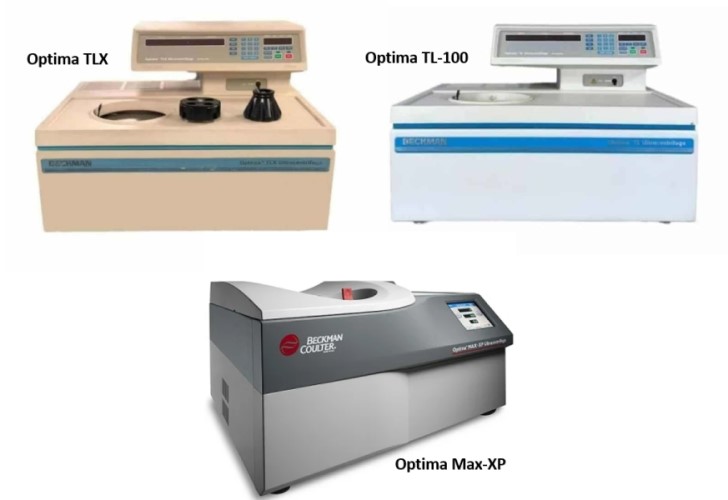Centrifuge
- Update Date:2025-01-15
- Units:Instrumentation Resource Center
[YangMing] Tabletop Ultracentrifuge
- Tabletop Ultracentrifuge
- Brand/Model: Beckman Coulter
- TL-100: M machine
- TLX: L machine
- MAX-XP: O machine
- Instrument Location: Yang-Ming Campus
- Room 465-2, Biomedical Engineering Building (M machine)
- Room 710-1, Biomedical Building (L machine)*
- Room B02, Shou-Ren Building (O machine)*
- Term of Use: The user must pass the examination and certification to use and must make an appointment in advance.
- Those marked with * must make an online reservation. The others are paper reservations.
- Free of charge for NYCU users. Off-campus users, please contact the center before using it.
- Reservation >>> Instrument Reservation System
- Contact center staff:
- Extension:62382
- Email:ycirc@nycu.edu.tw
Ultracentrifuge
In most cases, samples that are to be sent to the ultracentrifuge have already undergone some initial purification steps. After that, they need to undergo additional steps to obtain purer samples with ultracentrifuge.
Ultracentrifuges are equipped with four types of rotors to meet different sample requirements:
In most cases, samples that are to be sent to the ultracentrifuge have already undergone some initial purification steps. After that, they need to undergo additional steps to obtain purer samples with ultracentrifuge.
Ultracentrifuges are equipped with four types of rotors to meet different sample requirements:
- Fixed Angle Rotor: Mainly used for rapid separation of plasma DNA, subcellular particles, and fractions, as well as lipoproteins, viruses, and microsomes.
- Vertical-Tube Rotor: This rotor is mainly used for rapid separation of the density gradient, a technique where particles are separated based on their density; isopycnic centrifugation, a method that separates particles of equal density, and rate-zonal centrifugation, a process that separates particles based on their sedimentation rate.
- Swinging-Bucket Rotor: Mainly used in rate-zonal or isopycnic centrifugation of nucleic acid, protein, and virus.
- Near-Vertical Rotor: Mainly used for rapid separation of lipoproteins from mitochondrial DNA or plasma DNA in CsCl gradients.
Users can choose the appropriate rotor based on the experimental design of the sample separation to achieve the best experimental results.
This instrument can only be used after passing the examination and certification.
- After watching the video "Basic Principles of Centrifuge", you must call the center at least 3 days in advance (on-campus extension 62382) to make an appointment with the center staff to take a written test (you can bring your own notes for reference). Only those who pass the test with a score of 80 or above can participate in the center staff's hands-on teaching. Only those who have completed the above procedures will be qualified to operate the centrifuge.
- Written test location: the Instrumentation Resource Center office on the 4th floor, Biomedical Engineering Building, or the 7th floor, Biomedical Building. Extension. 62382.
Rules of Use
- The ultracentrifuge must be booked in the registration book or the online booking system before use. Each person can use the centrifuge for no more than 48 hours and 2 units at a time.
- The type and serial number of the rotor (e.g. TLA100.2, #12345) must be written on the registration book.
- The rotors should be stored in a 4℃ freezer, cleaned after use, inverted, and returned to its original position according to the model and serial numbers.
Related Image(s):
- Contact: [ #62382]












 中文
中文





